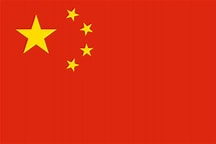With climate change and its adverse impacts on mankind, the demand and need for sustainable energy have been increasing rapidly. What are the current trends in this sector and what are the challenges ahead ?
Climate change is indeed, gigantic in dimension and intricate in its manifestations, impinging on the social, economic, political and sustainability dimensions in this world. The global pandemic may be behind us, but the consequences will continue to dominate in the next several years.
In the last couple of years, we have witnessed a set of issues, as the world transitioned from learning to cope with COVID-19 to dealing with the geopolitical crisis, Which includes the Russia-Ukraine situation! Today, the crisis deepens with the Israel-Hamas conflict and several other disturbances in other parts of the world. Energy has been crucial to mankind, much more so now, in the context of a compelling need to transition from energy security to energy sustainability.
The year 2022 saw a remarkable acceleration in the energy transition despite the headwinds. In part because of the energy crisis, with record renewable energy installations, and electric vehicle sales worldwide. Energy has always been a challenge, and energy adequacy has been a moot point for several decades now. In the current context, the challenge is beyond the adequacy of energy. Today, it is about energy security and sustainability.
The global transition in the energy sector is now characterized by technology and decarbonization; hosted on the theme of sustainability. Government policies and regulatory environments of several countries are indeed contributing to the fast-changing energy sector. and their journey to net zero in 2050 is going through a turbulent phase, amidst a set of complex and dynamic variables.
According to a Bloomberg report, 2022 marked the end of the four-year period in which climate goals on the international stage seem to scale much higher than one could imagine. It could also be related to national goals. One can draw a clue from the release of the IPCC special report on 1.5 degrees of global warming in 2018.
Through the UK’s and EU’s pledges to get to net zero in 2019 via Greta Thunberg and the run-up to Glasgow with so many countries coming to net zero, and the more than 150 enhanced indices throughout 2021 and 2022; where we find ourselves today, with vastly higher climate ambition and most of the world’s ambitions committed to net zero around mid-century.
We are in a much better place than several years ago. But such an increase in ambition will be harder to come by in the next 12 to 24 months. And national commitments are still not sufficient to get on track for 1.5 degrees. However, the outlook for no carbon transition continues to look extremely bright despite the supply chain challenges. While considering changes in the energy sector and the turbulence that energy is navigating globally, let’s look at some key energy trends,
Decarbonization
Reducing the carbon footprint is paramount and does not need an overemphasis. Therefore, there is a need to increase the share of renewable energy sources, and electric mobility and perhaps raise taxes on the use of fossil fuels. The conflict between fossil fuels and renewable energy sources continues to dominate the central stage despite a clear direction that several countries have taken towards renewable energy and the net zero goal by 2050.
Technology intervention
Technology is playing a key role in energy systems, machines, devices, and machine-to-machine and machine-to-human interactions are characterizing energy and power management solutions.
Distributed power infrastructure
With a large number of multi-level producers and consumers, it is an evolving paradigm in the energy sector. Spreading the power sources paves the way for a better leverage of renewable sources of energy; which is the need of the century. While we had an overview of top trends in the energy sector as of now, we could further expand into the emerging trends that are on the horizon for 2024.
For instance, renewable energy, climate change and preservation of the environment. The basic principle of renewables is based on extracting from a constant source in the environment like the sun, the wind, the geothermal resources, etc. Time, cost and sustainability goals are tremendously supported by renewable energy trends.
Second, is quantum computing, energy adequacy is a continuous challenge. For example, dedicating space for energy infrastructure or committing the number of units of electricity produced is facilitated by quantum computing.
Third, energy as a service this sector is witnessing the change from selling electricity to selling services, such as optimization of production, consumption management, and consumption tracking. Localizing energy sources enhances access to power to more people also supported by efficient storage systems. Therefore, today it is not uncommon to see electric vehicle companies gearing up to be energy service providers including the likes of Tesla.
Internet of energy
Smart grids will be the norm going forward. Internet of Energy (IOE) ensures better distribution of power systems with its decentralized and distributed models. It also creates a better framework for optimization and enhances coordination in the microenergy system.
Blockchain
Affordability apart from security is a must. Blockchain brings energy producers and consumers together. It is also a great integrator of all energy stakeholders under one decentralized network. Electricity producers’ distribution network operators, metering operators, and financial services providers and traders potentially benefit from smart contracts. These contracts ensure that all energy-related transactions pass through a secure and immutable network thereby eliminating losses.
Vehicle to grid
This is one of the significant sectors that will help clean energy goals, given the challenges emanating from climate change, which is why electric vehicles are indeed so important today. No one can shrug off a few areas in the world of clean energy because the electric car market recently has seen exponential growth in sales.
Together with improved range, wider model availability and increased performance. We estimate that almost one in five new cars sold in 2023 will be electric and this is likely to continue to scale in 2024 and beyond.
Electric vehicles are the key to decarbonising transport, a sector that accounts for around one-sixth of global emissions. Ambitious policies continue to be critical to growth in electric vehicle markets worldwide. If the sales growth experience in recent years is sustained. CO2 emissions from cars can be put on a path in line with the net zero emissions by 2050 scenario. However, despite huge growth in China, some European countries and some places in the US, electric vehicles are not yet a “phenomenon.”
Sales in developing emerging countries have been slow due to higher purchase costs and a lack of charging infrastructure. Electrification and the electric car revolution are going through the thick of transformation. It is not only in the passenger car market, but it is also in the commercial vehicle space that electric vehicles will make a significant impact on the climate across the globe.
The energy outlook
According to the Economic Intelligence Unit, energy consumption is likely to grow by 1.8% in 2024 globally, with strong demand in Asia; A key growth driver! While fossil fuel demand will continue to rise, demand for renewable energy will increase by 11%. As much as we are pushing towards clean energy, environment and renewable sources of energy to dominate the energy supply chain, fossil fuel continues to be a major source of energy, in several parts of the world.
The transition is imminent but has not kept pace with the targets for 2050. Conversely, sustainable assets have almost doubled in three years. In 2016, it was estimated at 87 billion; in 2019, at 150 billion; in 2022, at 255 billion; These are some indicative statistics relating to the growth of sustainable assets in the United States.
Countries in competition
As the net zero opportunity becomes clearer, the New Energy Outlook from Bloomberg puts the investment opportunity at $194 trillion by 2050. Countries are rightly looking for ways to capture value, in the clean energy transition from raw materials extraction and refining to technology development, manufacturing and deployment.
The United States, European Union and China are now in an explicit competition for jobs, economic value, technological leadership and supply chain dominance across clean energy and other technologies, both for economic and security reasons.
Several other countries are also looking for their fair share of the clean economy pie and India is notably one of them. The focus on jobs in different countries will lead to protectionism to a certain extent, and increasingly gloves will come off when it comes to trade policy relating to energy, technologies and commodities.
Flexible free trade policy
There is a need for a flexible free trade policy between nations to lower the barriers to clean technology adoption and some of the policies implemented either will prove counterproductive or raise costs. For example, solar analysts estimate that the cost of setting up a PV manufacturing supply chain in Europe or the US from polysilicon through two modules would be around 560 million per Gigawatt of annual production capacity compared to $145 million in China. But a world in which countries compete to capture value from the energy transition could still be one that moves faster towards Net Zero despite the implied inefficiencies.
New energy outlook
Considering how several nations are faring in their clean energy transition, it will be interesting to see how certain countries are likely to perform by 2030. According to Bloomberg New Energy Outlook, China, India and Indonesia are all easily likely to outperform the 2030 climate goals.
Even if these countries pursue the least cost trajectory mapped out in the economic transition scenario, they should be able to increase their climate ambition without incurring additional costs. Hence it is fair to anticipate that China, India and Indonesia will set higher targets beyond 2030 and reach substantial sustainability goals as they navigate their journey through clean energy transition.
In conclusion, energy and sustainability are intertwined closely. While the world is racing towards its 2050 Net Zero Goal, it will help follow some developing Sources of energy in Thorium and Hydrogen. Going forward, Energy production and Sustainability will be critical, and energy storage will be even more important as the Scientific world is grappling with this.
Guru Prasad Sowle is the founder member and Director (Indo–US affairs) at Indus International Research Foundation (IIRF).
Acknowledgement : Original published in AFT Energy Prime on November 7, 2023. This is a re-print.








